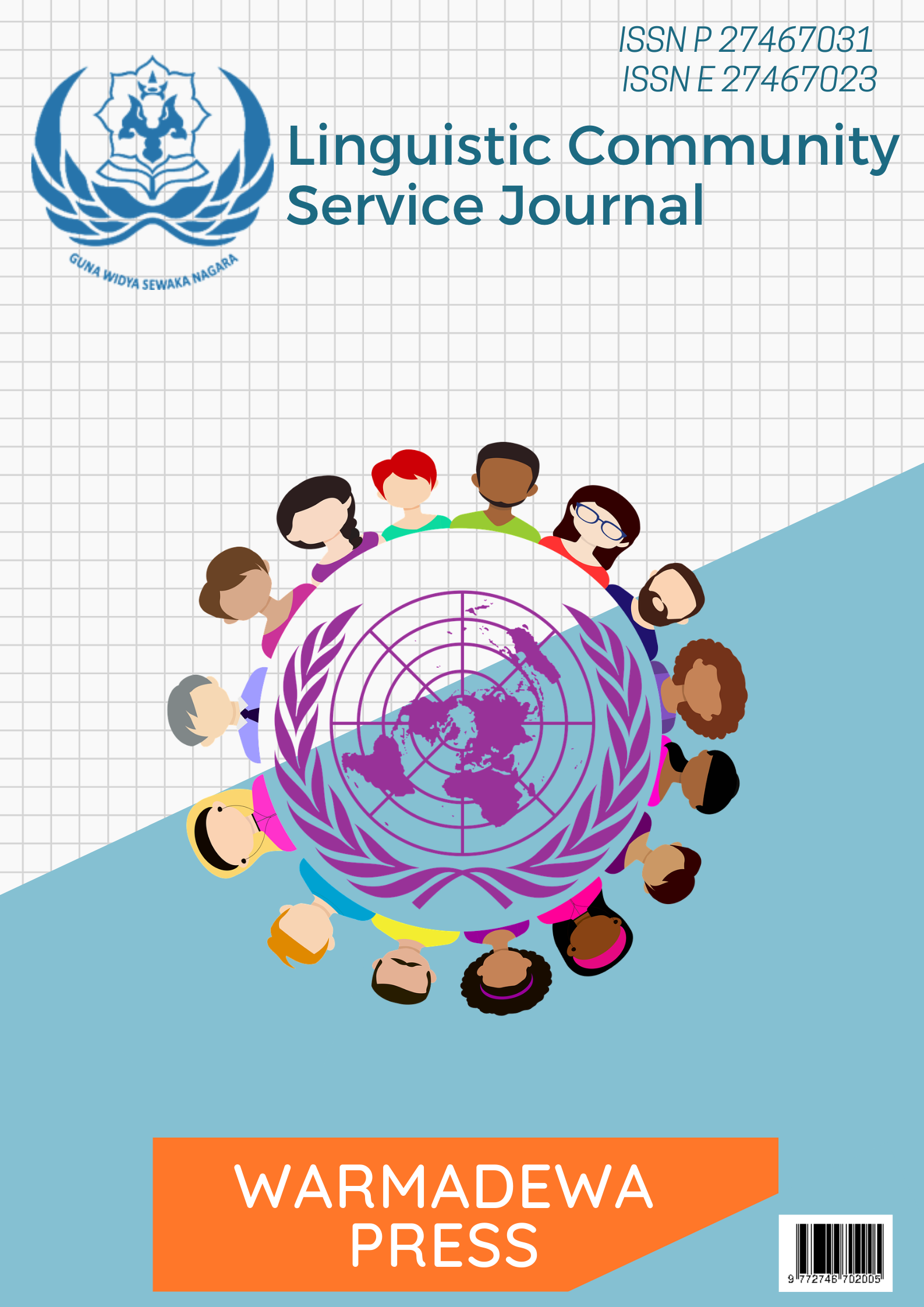Metode Komunikasi Persuasif untuk Meningkatkan Motivasi Berwirausaha Masyarakat di Desa Kesiman Kertalangu pada Masa Pandemi Covid-19
Abstract
Persuasive communication is an approach that aims to change someone’s point of view, attitude and beliefs. At the time of the Covid-19 pandemic, almost all levels of society experienced the negative impact of the prolonged outbreak and it affected the mentality especially those who lost their jobs. This is also experienced by the community in Kesiman Kertalangu Village so the persuasive communication methods are needed to increase the motivation of the community to become entrepreneurship. This study aims to find out the appropriate persuasive communication method to use and the factor which become a problem in delivering the messages through persuasive communication methods. This study is field research with descriptive qualitative explanation using groups of people in Kesiman Kertalangu Village as purposive sampling. Data were collected through observation, interview and documentation. The theory used is the theory from Keraf, 2010 about various persuasive techniques and speech act theory proposed by Searle (1969). The findings of this study are that the persuasive techniques used consists of five techniques, namely association techniques, reward techniques, integration techniques, red-herring techniques and structuring techniques. The persuasive is expressed in the form of speech acts, namely, assertive speech acts, directive speech acts, commissive speech acts, expressive speech acts and declarative speech acts. The problems faced in delivering the messages through persuasive communication methods are inadequate preparation, differences in social status, differences in interests, and negative prejudice.
This journal provides immediate open access to its content on the principle that making research freely available to the public supports a greater global exchange of knowledge.
All articles published Open Access will be immediately and permanently free for everyone to read and download. We are continuously working with our author communities to select the best choice of license options, currently being defined for this journal as follows: Creative Commons-Non Ceomercial-Attribution-ShareAlike (CC BY-NC-SA)
 Abstract viewed = 1748 times
Abstract viewed = 1748 times
 PDF downloaded = 13718 times
PDF downloaded = 13718 times














